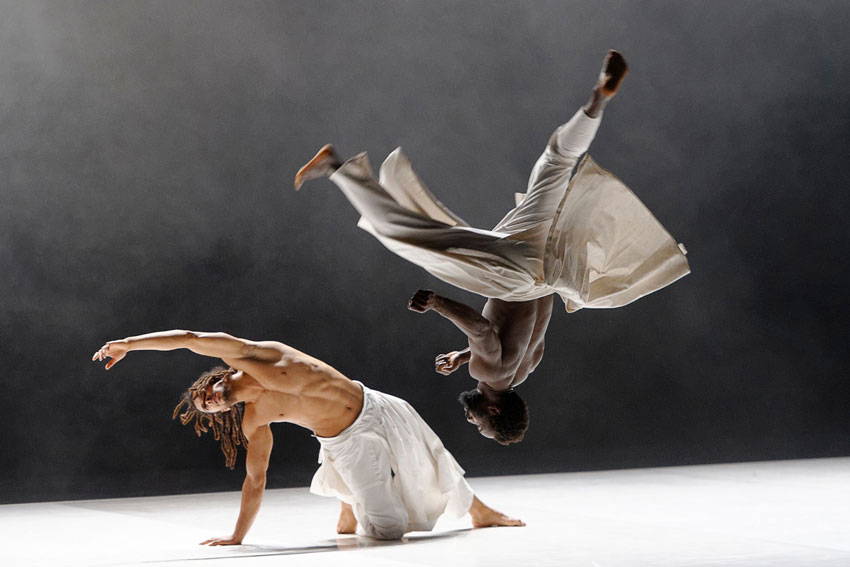OzAsia Review:
What The Day Owes To The Night

Choreographer Hervé Koubi was brought up in France, but discovering his immediate ancestors were Algerian, he was inspired to create a dance work with men from around the Mediterranean rim.
The title of the work is from a novel by Yasmin Khadra. None of the first cast was professional, but many were street dancers and skilled in capoeira, hip-hop and martial arts. Koubi added ballet and gymnastics into the mix. The result is a unique style that astonishes and is sometimes quite breathtaking.
The thirteen men of the cast are bare-chested, wearing white close-fitting long pants beneath skirts which swing freely when the dancers move. The smoky stage is dark at first, but very gradually the lights come up on a heap of bodies centre stage, and just as gradually arms, legs and men emerge as the sound of a gong begins softly and develops in intensity. One man comes down stage and begins to spin on his head. Others begin running. Leaping , turning and somersaulting backward and forwards in the air add to the momentum, and then there is a sudden stop. They walk, slowly, and this contrasting of fast and slow becomes a key element of the work. They twirl like dervishes, their white skirts flaring out. They pirouette on their hands, and even more amazingly on one hand. They do aerial catherine wheels, they throw one another into the air. These are men dancing as men, and there is also a tenderness, especially towards the end, when they pair off.
Excitingly, several form a ramp up which another walks, stands and falls, to be caught by the rest, who also fall to the floor. Later, five throw one into the air, and even more spectacularly, another group does the same, at the same time. Repetition of some movements means that they lose their effectiveness – head spinning for instance, even though four dancers at the same time is a remarkable sight.
The gym-buffed dancers are superb, and the stage is lit with great skill by Lionel Buzonie. The soundscape is a collage ranging from Bach to Sufi rhythms, and a quiet sequence of an oud. And there are moments of silence when the only sound if there is any is from the dancers’ breathing or their feet. Though towards the end, one begins quietly calling out what could be ‘Hip’ and then ‘Hop’. Taken up by the rest of the cast, they get louder and louder until they stop.
Oddly, there is little engagement with the audience – the movement is often towards the centre, and the dancers have their backs to the audience – but in a way this works because the viewer is drawn in.
What The Day Owes To The Night was performed at the Dunstan Playhouse on 22 October as part of OzAsia Festival